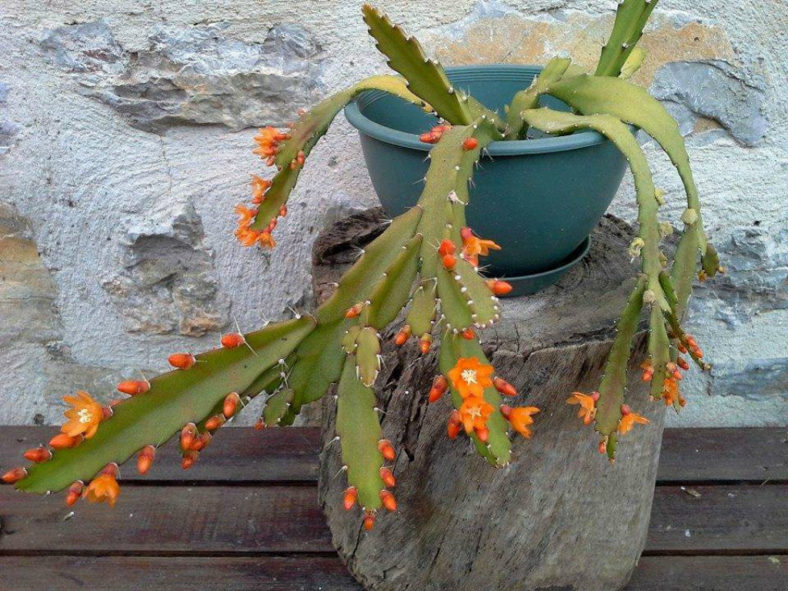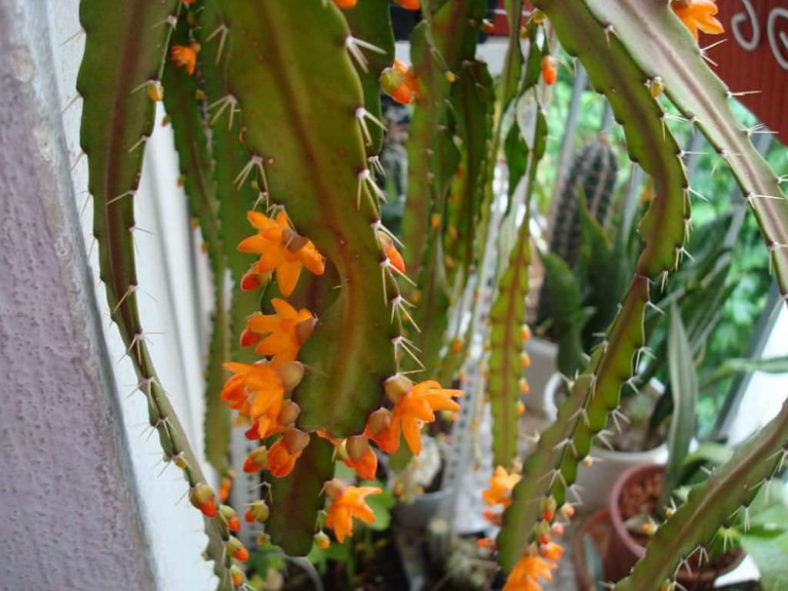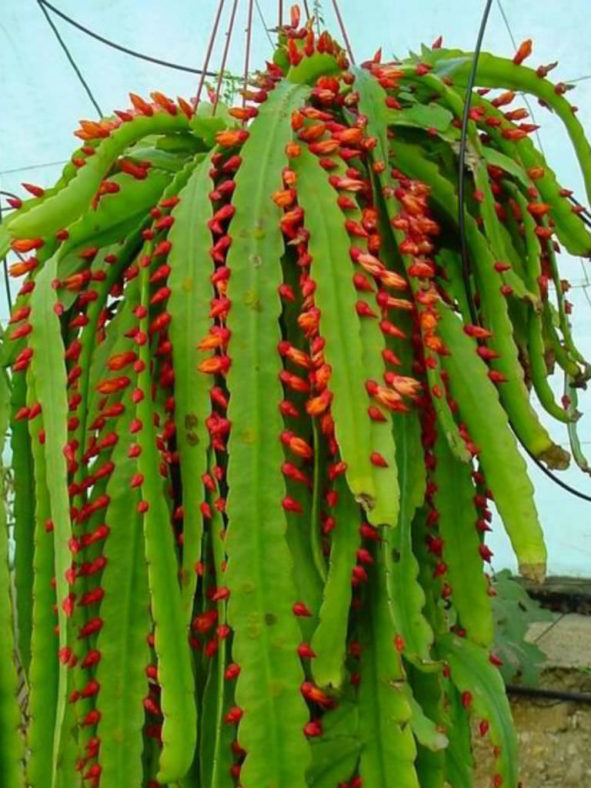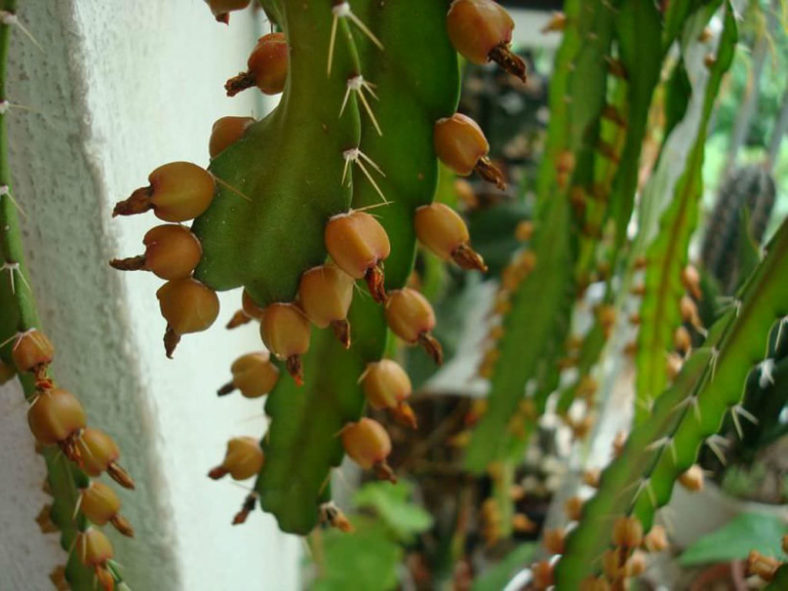Scientific Name
Pfeiffera monacantha (Griseb.) P.V. Heath
Synonym(s)
Acanthorhipsalis monacantha, Hariota monacantha, Lepismium monacanthum, Rhipsalis monacantha
Scientific Classification
Family: Cactaceae
Subfamily: Cactoideae
Tribe: Rhipsalideae
Genus: Pfeiffera
Etimology
The specific epithet "monacantha" (pronounced "mon-ah-KANTH-uh") means "one-spined" and refers to the areoles of this species, which often have only one spine.
Origin
Pfeiffera monacantha is native to northwestern Argentina and southeastern Bolivia. It grows as an epiphyte or lithophyte at elevations ranging from 980 to 6,560 feet (300 to 2,000 m).
Description
Pfeiffera monacantha, also known as Lepismium monacanthum or Rhipsalis monacantha, is a shrubby, slow-growing cactus with flat to three-angled branches with serrated ribs and felted areoles, each with a few bristles and 1 to 6 spines. The branches can grow up to 18 inches (45 cm) long and 1.2 inches (3 cm) wide, initially erect, but become pendulous as they lengthen. The spines are stout and black, measuring up to 0.4 inches (1 cm) in length.
The flowers are waxy orange and appear solitary at the areoles. They can reach a length of 0.6 inches (1.5 cm) and a diameter of 0.8 inches (2 cm). The fruits are small, spherical, orange or pale pink, and more or less translucent, adorning the plant for months.

Subspecies of Pfeiffera monacantha
- Pfeiffera monacantha subsp. kimnachii
- Pfeiffera monacantha subsp. monacantha
How to Grow and Care for Pfeiffera monacantha
Hardiness: USDA hardiness zones 10a to 11b: from 30°F (-1.1°C) to 50°F (10°C).
Rhipsalis do not thrive in direct sunlight. Exposure to the afternoon sun can cause the leaves to burn, turn yellow, or develop spotting. However, they will not bloom without sufficient sunlight, and their growth can be stunted as a result. Therefore, these cacti do best with morning sun and full shade in the afternoon.
As Rhipsalis is commonly grown indoors, care must be given to the placement of the plants. They should be kept at least 20 inches (50 cm) from windows that receive midday or afternoon sun. The glass in the windows can multiply the heat from the sun's rays, causing sunburn on the leaves. Keep in mind that in its native environment, Rhipsalis is accustomed to receiving light filtered through dense, overhanging tree branches. Picturing this environment can help you adjust your lighting accordingly.
Rhipsalis is not a drought-resistant plant, so regular watering is essential. Overwatering, however, can cause weak stems and rotted roots. A watering can helps you measure the amount of water you are providing. The pot size, in relation to the plant's size, the humidity levels in the home, and the type of potting soil used, can all affect the watering frequency.
Learn more at How to Grow and Care for Rhipsalis.
Links
- Back to genus Pfeiffera
- Succupedia: Browse succulents by Scientific Name, Common Name, Genus, Family, USDA Hardiness Zone, Origin, or cacti by Genus
Photo Gallery
Click on a photo to see a larger version.


